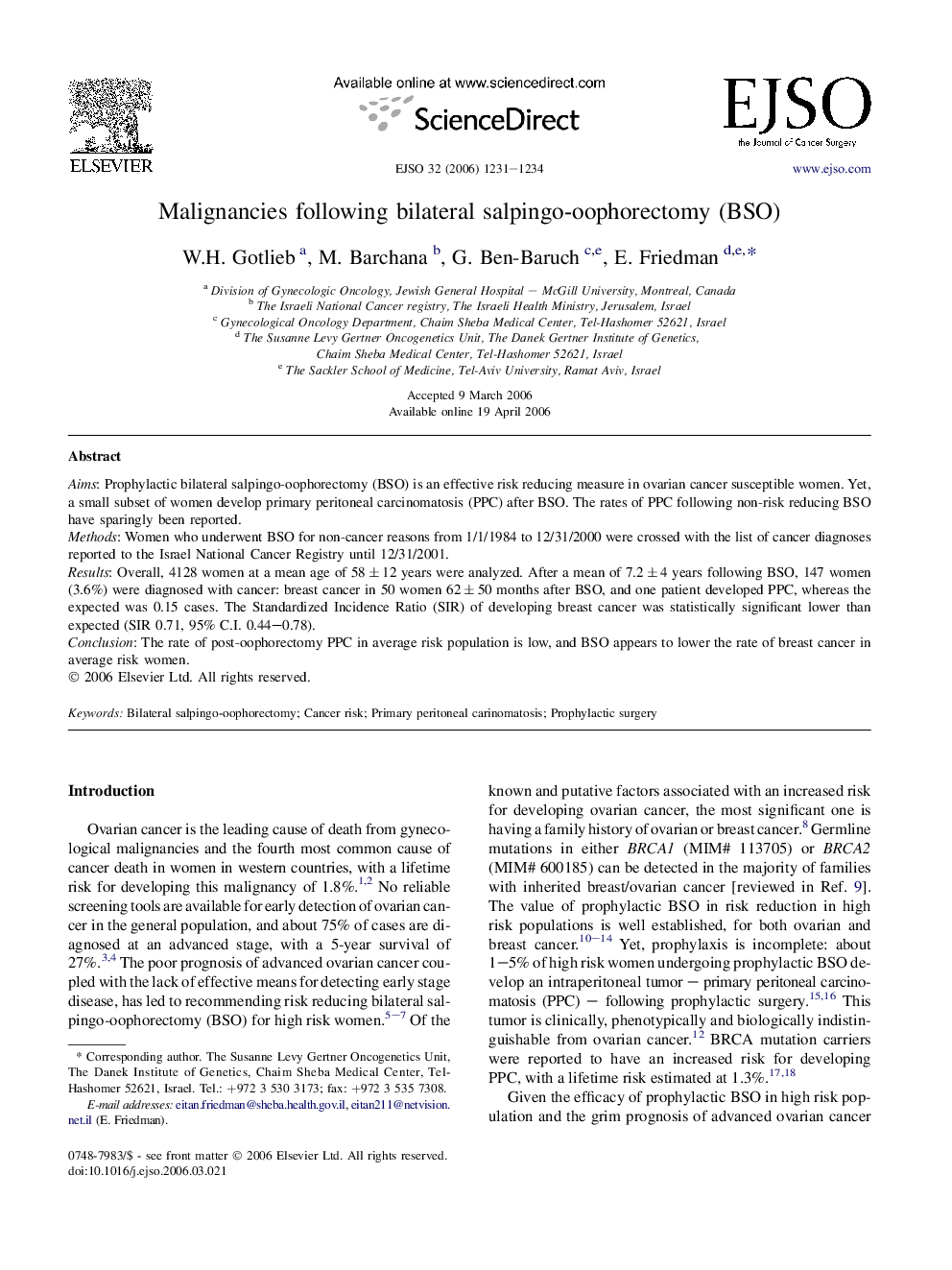| Article ID | Journal | Published Year | Pages | File Type |
|---|---|---|---|---|
| 3987998 | European Journal of Surgical Oncology (EJSO) | 2006 | 4 Pages |
AimsProphylactic bilateral salpingo-oophorectomy (BSO) is an effective risk reducing measure in ovarian cancer susceptible women. Yet, a small subset of women develop primary peritoneal carcinomatosis (PPC) after BSO. The rates of PPC following non-risk reducing BSO have sparingly been reported.MethodsWomen who underwent BSO for non-cancer reasons from 1/1/1984 to 12/31/2000 were crossed with the list of cancer diagnoses reported to the Israel National Cancer Registry until 12/31/2001.ResultsOverall, 4128 women at a mean age of 58 ± 12 years were analyzed. After a mean of 7.2 ± 4 years following BSO, 147 women (3.6%) were diagnosed with cancer: breast cancer in 50 women 62 ± 50 months after BSO, and one patient developed PPC, whereas the expected was 0.15 cases. The Standardized Incidence Ratio (SIR) of developing breast cancer was statistically significant lower than expected (SIR 0.71, 95% C.I. 0.44–0.78).ConclusionThe rate of post-oophorectomy PPC in average risk population is low, and BSO appears to lower the rate of breast cancer in average risk women.
